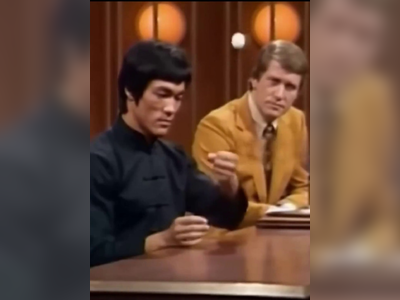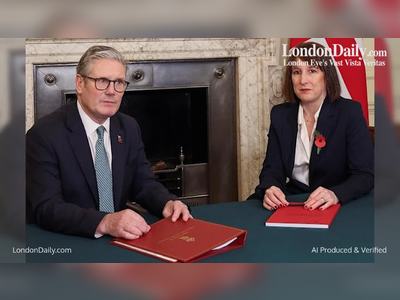How street style changed fashion weeks, and why its future is in doubt as industry resets after the pandemic
There’s one trend that fashion weeks across the globe consistently have in common: performative crowds of peacocking attendees. Every season, the industry moves between various cities – from Seoul to London – to see designers reveal their new collections in theatrical catwalk shows and presentations, but the real show is on the streets outside.
Because of the coronavirus pandemic, the usual fashion week routine of crowds piling into venues, sitting thigh-to-thigh and squashing to fit onto rows of wooden blocks is no longer safe. Showing online has been the only option, as Shanghai did in late March, Moscow in April, and London in June, and as Milan plans to do this month. Others, including Seoul, have been cancelled entirely.
Even the shows that will take place physically, such as Dior’s Cruise2021 show later this month, plan to be audience-free. The curtains have closed on the seasonal street-style circus.
Photographers shooting people’s looks outside the heavily guarded venues became a defining element of the fashion week economy, with influencers frequently dressed by designers for promotion, and other fame-hungry guests yearning to be shot and subsequently featured in top publications to carve their personal brands. Photographers sell photos, influencers sell clothes.
This exhibitionist parade didn’t begin until 35 years after the first fashion week was held, when the late photographer Bill Cunningham started a street style column documenting well-dressed showgoers in 1978 for The New York Times.
“We all get dressed for Bill,” editor-in-chief of American Vogue Anna Wintour confessed in the 2011 documentary Bill Cunningham New York, “It’s always one snap, two snaps. Or he ignores you, which is death.”
One of the first photographers to begin publicising fashion week outfits online was Scott Schuman, of street style blog The Sartorialist. He explains to the Post that back in 2005 when he started, the scene was authentic because people hadn’t yet realised the power that the photos would have.
“It was more stylists getting dressed up to share what great style they had to get work from magazine editors,” he says. “Editors also wanted to show their team was the coolest too. It’s not a new thing, people getting dressed up for fashion week, they always did that.”
When “street style” articles began circulating online, the culture, as we now know it, was born; attendees gained fame and set trends with their meticulously thought-out looks. Schuman says: “I was the first to shoot Giovanna Battaglia and Vogue Japan’s editor Anna Dello Russo. No one knew who they were before.” Thanks to photographers like him, they are style icons.
Lee Oliveira shoots fashion week street style for leading publications, and has done so for almost a decade; he tells us that the notorious peacock culture is a direct result of photographers like him.
“A lot of editors were wearing black before. They were trapped in a simple style but then they noticed that photographers were out there, so they wanted to show us that they were well dressed people. It’s become an opportunity for people to promote themselves.”
When the newer East Asian fashion weeks arrived, they quickly became part of the street style circuit, with Seoul (est. 2000), Shanghai (est. 2001) and Tokyo (est. 2005) all now known for having guests who serve an eclecticism of bold looks.
Stylist and former senior fashion news director at American Vogue, Monica Kim says: “Street style images played a large part in generating interest for Seoul Fashion Week on a global scale.”
People standing on the streets, ruffling their sartorial feathers for the camera has become the norm every season. Yet now, thanks to Instagram, self-promotion doesn’t have to wait for fashion week, so will the industry even miss street style amid coronavirus cancellations?
Ultimately, the scene can be credited for fuelling today’s brand-influencer model that is now a principal component of social media. Oliveira says that fashion week outfits would equate to immediate sales.
“Influencers would bring friends’ clutches, shoes and accessories. Six months later, you would see those small brands becoming huge simply because they were worn to fashion week.”
Shoots outside shows quickly became a multifaceted, moneymaking venture, but they also made for a more relatable industry. “Street style added that human connection to fashion week,” says trend forecaster Jane Boddy. “Often, what is seen on the streets is more inspiring and its reach can go further and last longer as a source of trend inspiration than the shows themselves.”
According to Boddy, without herds of well-dressed attendees getting photographed, fashion week also won’t be as appealing to consumers. “It’s an essential part of the process,” she says. “It adds a needed connection between the catwalk and the public. It’s about human expression.”
Before street style shots went viral and bloggers took over the industry, fashion was a lot less relatable. Schuman says that he doesn’t miss his self-titled “fashion week photography” because it has become less about style for attendees, and more about sales.
“Instagram really killed the mystery,” he says. “Fashion shouldn’t be about facts. It’s about creating a mystery, an aura, it needs all the smoke and mirrors.”
In recent years, fashion week looks reflected a commercially driven strategy rather than stylish creativity. And in a society overflowing with influencers posting #ad’s and landing constant brand deals, on Instagram, it isn’t so needed.
“I do feel that a lot of people, particularly those who have been in the industry for a while, were beginning to experience some street style fatigue [at fashion week].” Kim admits. “There were more people being dressed by brands, less natural style, and all the peacocking outside the venues did often detract from the main event.”
Catwalk shows and presentations will always attract fashion-forward guests. But if the future remains digital post-coronavirus, the current fashion week hierarchy of outfit prestige and self-promotion will be lost, directing more focus onto the actual collections.
Fashion is being forced to change; its notoriously fast pace has slowed, and the excessive travelling between cities every season has ground to a halt. Despite having to lose out on his fashion week income, Vogue photographer Paul Jeong says it shouldn’t be seen negatively.
“Fashion weeks offer multitudes of jobs to many professionals in this field,” he says, but “digitalisation is a progressive and more sustainable approach to how we go about fashion weeks.”
The ready-to-wear shows in Europe alone would ordinarily have thousands of professionals flying to four countries in the space of one month. However lovely live shows are and however famous street style shots make guests, it’s not essential. Jeong says: “Like many other creatives, I am having to reassess and adapt to changes within this market.”
As the world pauses, we can reflect nostalgically on the street style inspiration which fashion weeks have provided, and imagine a future without hordes of branded guests, one where our attention is steered back to the shows and we discover creative new ways to present those instead.
The industry is resetting, so fashion week street style will too. If the show does go on, we’re likely to see a revival of authentically expressive ensembles, with fewer overseas guests and therefore, a much greener ethos.





















